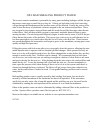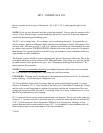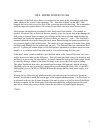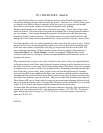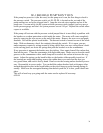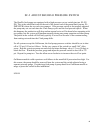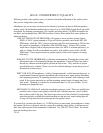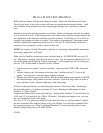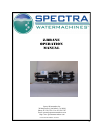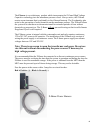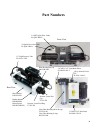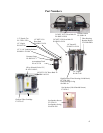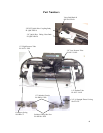42
HS LF-2 FLOW TEST/ SHURFLO
Before the test, change all filters and clean the strainer. Make sure that there are no leaks.
Check for air leaks, as air in the system will cause low production and erratic salinity. Look
for air bubbles in the product flow meter, feed pump discharge hose, and brine overboard
hose.
Run the system and watch the pressures very closely. Make sure that on each shift everything
is even from side to side. If the feed pressure to the Clark pump is different (asymmetrical) on
one stroke than on the other this could be part of the problem. A difference of a few PSI is ac-
ceptable, but anything over that is an issue. If the pump is asymmetrical Clark pump repairs
should be done before continuing with these tests. Ask for CP-5 Clark Pump Checkout in-
structions. If no asymmetry is noted, please do this test.
NOTE: On Ventura 150 and 200 models with only one feed pump, disregard the instructions
concerning “pump two” and “both”
Make sure the ShurFlo overpressure cutout switches (part no. PL-PMP-SFPH) are set to 125
psi. With pump 1 running, close the brine service valve. The feed pressure should rise to 125
psi and the pump should shut off. Repeat with pump 2. If the pumps shut off at a lower pres-
sure see “SF-2 Adjust ShurFlo Pressure Switch” bulletin.
1. Log the pressure on pump 1, pump 2, and both. Log the product GPH (LPH) at the same
time.
2. Log the voltage at the feed pumps at the same time. Confirm at least 12.5 volts at the
pumps. You may have to run the engine or battery charger.
3. Measure the total flow rate of the system. Run the system making water and divert BOTH
the brine discharge AND product water into a bucket. Time how long it takes to make a
given amount of water. Repeat with pump 2 and both pumps.
In order to make good water, you need the proper amount of feed water flow. Each pump
alone should produce 1.5 gallons per minute (5.7 lpm). Running on both pumps the flow
should be 2.7 gpm (10 lpm).
Compare the product flow to the total feed flow. Product flow should be 7% of total flow for
a 150, and 9.5% of total flow for a 200 or 380 model. If product percentage is low, you may
have an internal leak in the Clark pump.
For every 1/10
th
of a gallon per minute of feed water flow loss, we will lose about 1/2 gallon
per hour of product flow and the salinity will go up 100ppm. Low feed flow combined with
low system pressures, (see “Misc-4: Nominal Pressures”), is most frequently due to worn
ShurFlo pump heads (part no. PL-PMP-SFPH).
9/24/04




